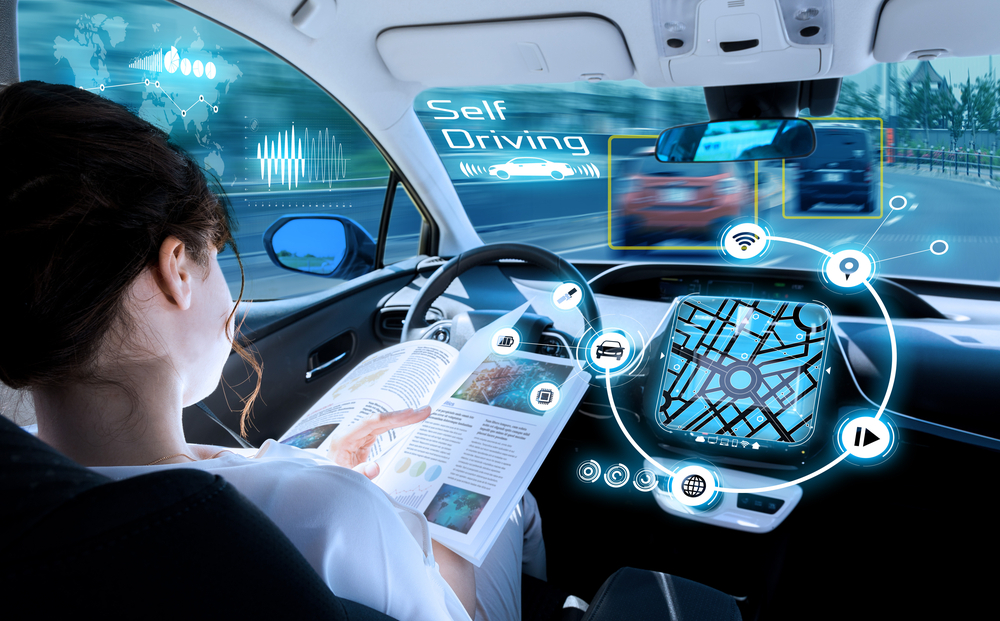Undoubtedly technology is making our life easier. Internet of Things (IoT), Artificial intelligence, smart cities are not just buzzwords anymore. They have become our reality. While new technological advancements assist humans in many ways, they also do the job for us. Is it a good or bad side effect you think? One of the main areas affected by the technology advancements is the automotive industry. It is a good example, showing how the new technology can be incorporated into a rather traditional, mechanical world.
If 10 years ago driving a car was only about operating a vehicle, now it becomes a sort of entertainment. The semi self-driving cars are already in use and they keep developing. One of a such is Tesla, which in 2018 was ranked as the world’s best-selling plug-in passenger car manufacturer, the one that can be recharged from an external source of electricity (Tesla, 2019).
It has been announced that Tesla is introducing the company’s biggest software update. With the launch of the V10.0 software, in-car entertainment becomes real (Etherington, 2019). The feature called Smart Summon allows not only listening to music through Spotify but many more other features. For example, it will be possible to have in-car karaoke experience in the “Car-aoke” mode including a huge library of music and lyrics, supported by many different languages (Glon and Price, 2019).
Another feature is the Tesla Theatre mode that will allow Tesla owners to watch Netflix, YouTube, and Hulu, including Live TV if a user is subscribed to it. This option is only allowed when the car is safely parked and is particularly useful when the owners are waiting at a charging station. Enabling watching videos while moving would be only possible when full self-driving is approved by regulators. Yet full self-driving will not be happening any time soon (Glon and Price, 2019). Furthermore, one of the interesting features also includes navigation to local restaurants and any point of interest that are within the car’s range. Thus, improved maps will enable to make search results sorted based on distance (Tesla, 2019).
Lastly, customers who have purchased Full Self-Driving Capability or Enhanced Autopilot can enable self-navigation of their car through a parking lot and drive to them or to the destination that they choose, as long the car is within their visibility. Thus, the users of Smart Summon must be responsible for their car and monitor it and the surroundings. (Tesla, 2019). All of it sounds cool, but do you think it is necessary? What is your opinion on Tesla’s biggest software update?
References
Blum, B. (2019). This tech helps self-driving cars see well in all weather. Retrieved 29 September 2019, from https://www.israel21c.org/this-tech-helps-self-driving-cars-see-well-in-all-weather/
Etherington, D. (2019). Tesla V10.0 car software update adds Smart Summon, Netflix/YouTube, Spotify, karaoke and more – TechCrunch. Retrieved 29 September 2019, from https://techcrunch.com/2019/09/26/tesla-v10-0-car-software-update-adds-smart-summon-netflix-youtube-spotify-karaoke-and-more/
Glon, R., & Price, E. (2019). Tesla V10 Update Includes Smart Summon, Caraoke, Tesla Theater, More | Digital Trends. Retrieved 29 September 2019, from https://www.digitaltrends.com/cars/tesla-v10-update-preview-video-netflix-youtube-caraoke-cuphead-release-date/
Tesla. (2019). Introducing Software Version 10.0. Retrieved 29 September 2019, from https://www.tesla.com/nl_NL/blog/introducing-software-version-10-0?redirect=no


